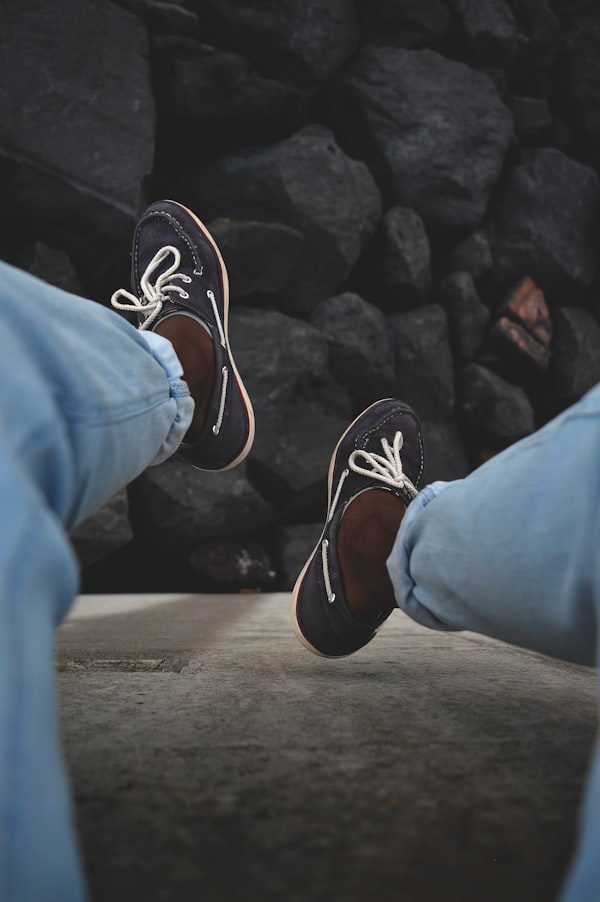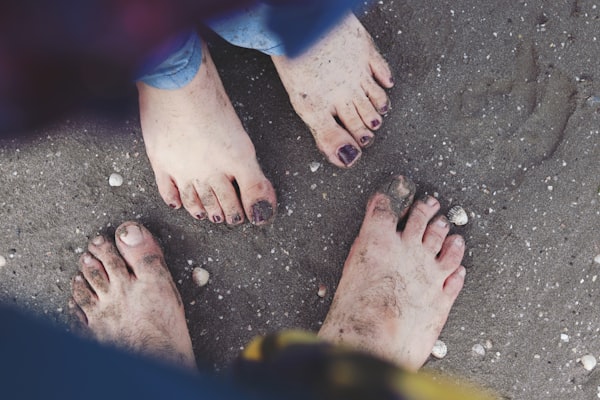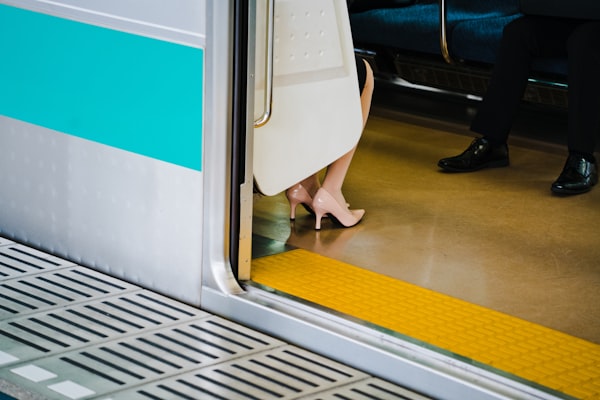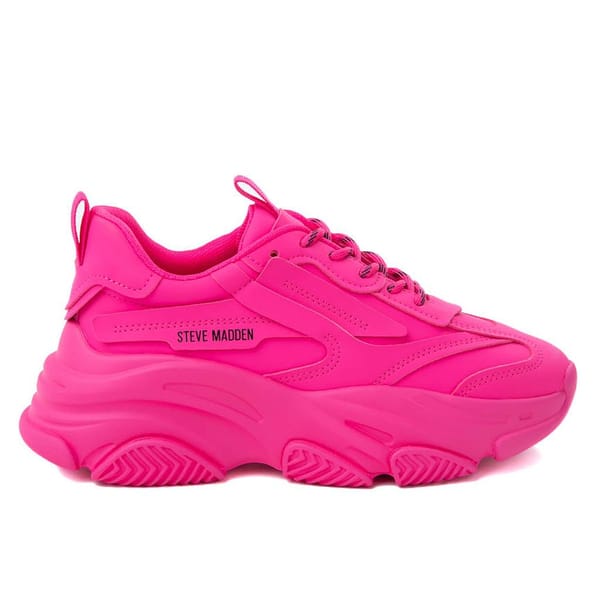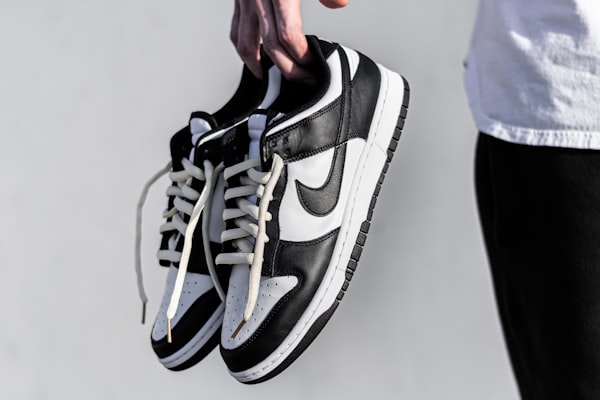Achilles, the legendary Greek hero, had just one weak spot, and we all know how that ended for him. But for mere mortals like us, there's good news: Achilles' heel can be a thing of the past, and it starts with finding the perfect running shoes for Achilles Tendonitis.
Introducing the ultimate guide to help you stride pain-free and run like the wind again. Here, we'll walk (or should we say, "run") you through the process of selecting the best running shoes tailored to your Achilles Tendonitis needs.
Imagine setting new personal records, exploring scenic trails, and crossing that finish line without the nagging pain holding you back. Sounds almost mythical, doesn't it? With our expert tips and advice, you'll feel like you've discovered the secret to the runner's fountain of youth.
So, lace up your current sneakers one last time, and let's embark on a journey to find your ideal pair. With the right shoes, you'll be saying, "Achilles, who?" in no time.
What Is Achilles Tendonitis?
Achilles Tendonitis is an overuse injury of the Achilles tendon. The Achilles tendon is a thick, fibrous tissue that connects the calf muscles at the back of your lower leg to your heel bone. This tendon is crucial for walking, running, and jumping, as it helps lift your heel off the ground during these activities.
Achilles Tendonitis occurs when the tendon becomes inflamed, irritated, or swollen due to excessive strain, overuse, or a sudden increase in physical activity. This condition can cause pain, stiffness, and discomfort along the tendon, particularly in the morning or after periods of rest.

Some common risk factors for Achilles Tendonitis include tight calf muscles, improper footwear, increased activity intensity or duration, and training on uneven or hilly terrain. Treating Achilles Tendonitis usually involves rest, ice, compression, elevation (aka RICE), physical therapy, and stretching and strengthening exercises. In more severe cases, medical intervention or even surgery might be necessary.
Why Is the Choice of Running Shoes Critical for Achilles Tendonitis Sufferers?
The choice of running shoes is crucial for individuals with Achilles Tendonitis because the right footwear can help alleviate pain, reduce stress on the tendon, and prevent further injury. Wearing appropriate running shoes can help prevent additional aggravation of the Achilles tendon and other foot injuries. In addition, the right footwear can enhance overall running biomechanics, which reduces the risk of developing injuries like plantar fasciitis, shin splints, or stress fractures.

While rest is essential to recovering from Achilles Tendonitis, choosing the right running shoes can help support rehabilitation and speed up the recovery process. The combination of cushioning, support, and stability enables a gradual return to activity without causing excessive strain on the tendon.
For those with Achilles Tendonitis, choosing shoes that provide adequate traction, stability, and protection for the specific surface is crucial, further minimizing the risk of injury or exacerbating the condition. A well-designed shoe can support healing and enable a comfortable running experience.
Each individual's foot shape, arch type, running gait, and severity of Achilles Tendonitis may differ. Therefore, it's essential to find running shoes that cater to your unique needs and preferences, ensuring optimal support and comfort.
What Features Should Achilles Tendonitis Sufferers Look for In a Running Shoe?
Choosing the right running shoe can make all the difference when it comes to running with Achilles Tendonitis. Running shoes with specific features can help minimize the stress on the tendon, reduce discomfort, and aid in the healing process. Let's explore some essential features that Achilles Tendonitis sufferers should look for when selecting a running shoe.
1. Support and Cushioning
Support and cushioning work in tandem to minimize the impact and stress on the tendon and joints while running, ultimately alleviating pain and discomfort.
A well-cushioned shoe effectively absorbs shock during foot strikes, reducing stress on the Achilles tendon during heel strike and toe-off phases. It also distributes pressure evenly across the foot, which can help prevent overloading the tendon and surrounding muscles.
Proper support in running shoes ensures that your feet and ankles are stabilized, maintaining the proper alignment and biomechanics throughout your stride. This stability is essential for reducing excessive movement and strain on the Achilles tendon, further preventing irritation and inflammation.
2. Heel Elevation
This design element involves a slightly raised heel that can help alleviate strain on the tendon by reducing the angle between the calf muscle and the foot.
When the heel is elevated, the stretch on the Achilles tendon is decreased, minimizing irritation and inflammation. This reduced stretch allows the tendon to heal more effectively and can lower the risk of further injury. Heel elevation can also lessen the demand on the calf muscles, benefiting individuals dealing with tightness or inflexibility in this area.
3. Arch Support
Proper arch support helps maintain appropriate foot alignment and biomechanics, reducing strain on the Achilles tendon and contributing to a more comfortable running experience.
Adequate arch support in running shoes caters to various foot arch types, such as high arches, neutral arches, or flat feet. Each arch type requires different levels of support to ensure proper weight distribution and prevent excessive pronation. Overpronation can increase tension in the Achilles tendon, worsening the condition.
Individuals with Achilles Tendonitis can reduce the risk of developing secondary issues related to improper foot mechanics, such as plantar fasciitis or shin splints, by choosing running shoes with the right arch support. This support also helps maintain proper foot alignment, reducing the load on the Achilles tendon and allowing it to heal more effectively.
4. Flexibility and Stability
A balance between flexibility and stability ensures a comfortable and supportive running experience while reducing the risk of exacerbating the condition.
Flexibility in running shoes allows for natural foot movement and a smooth transition during the gait cycle. This ease of movement reduces strain on the Achilles tendon and surrounding muscles, minimizing the risk of injury or irritation. Flexible shoes help adapt to different running surfaces, ensuring an efficient stride without compromising the tendon's healing process.
On the other hand, stability prevents excessive foot movement that could strain the Achilles tendon further. It is crucial for those who overpronate, as it helps maintain proper foot alignment and reduces the load on the tendon. A stable shoe can also protect the foot from potential injuries during running, such as rolling an ankle, by providing the necessary support.
5. Shock Absorption
Shock absorption helps reduce the impact forces on the tendon during running activities. By lessening the stress transmitted to the Achilles tendon and the surrounding muscles and joints, effective shock absorption can provide a more comfortable and pain-free running experience.
Running shoes with excellent shock absorption typically feature cushioned midsoles made from materials like EVA foam or gel, designed to dissipate impact forces during foot strikes. This energy dispersal lowers the load on the Achilles tendon and can significantly reduce the risk of aggravating the condition or causing further injury.
Additionally, effective shock absorption can enhance overall running biomechanics, promoting a smoother and more efficient stride. This improvement in running form helps minimize fatigue and strain on the lower leg muscles, further supporting the healing process of the Achilles tendon.
6. Rearfoot Control
Rearfoot control provides stability and support to the heel and ankle during running, ensuring proper foot alignment and biomechanics throughout the stride. This control helps to minimize strain on the Achilles tendon and contributes to a more comfortable and pain-free running experience.
Running shoes with good rearfoot control typically feature a reinforced heel counter and stability elements within the shoe's midsole. These components work together to limit excessive movement that could stress the Achilles tendon, reducing the risk of irritation or inflammation.
By keeping the foot and ankle stable, rearfoot control helps maintain proper alignment throughout the running gait. This stability is especially crucial for those who overpronate, as it can prevent additional stress on the Achilles tendon that may hinder the healing process or cause further injury.
7. Gradual Transition
Gradual transition refers to the smooth progression of foot motion from heel strike to toe-off during the running gait. A shoe that promotes a gradual transition helps minimize stress on the Achilles tendon, reduces discomfort, and facilitates a more efficient running stride.
Running shoes that enable a gradual transition typically have a well-designed midsole with adequate cushioning and a flexible forefoot, allowing for a natural, fluid movement throughout the stride. This seamless motion reduces the load on the Achilles tendon, preventing irritation or inflammation and supporting the healing process.
In addition to promoting a smoother stride, a gradual transition also helps improve overall running biomechanics. Proper biomechanics reduce the risk of developing other running-related injuries, such as shin splints or plantar fasciitis, that could further hinder your progress or recovery.
8. Lightweight Design
Lightweight shoes can reduce strain on the Achilles tendon and lower leg muscles, providing a more comfortable and less fatiguing running experience.
A lighter shoe places less demand on the muscles and tendons during the running gait, which can help minimize irritation or inflammation in the Achilles tendon. This reduction in stress can support the healing process and prevent further injury, allowing individuals with Achilles Tendonitis to maintain an active lifestyle.
Lightweight running shoes also offer better flexibility and responsiveness, promoting a more natural and efficient stride. This improvement in running biomechanics can reduce the risk of developing other running-related injuries and help improve overall performance.
Furthermore, a lightweight design can contribute to a faster recovery by limiting muscle fatigue during runs, allowing the body to heal more effectively between training sessions.
9. Breathability and Comfort
Breathability and comfort are essential features to consider in running shoes for individuals with Achilles Tendonitis. Shoes with good breathability help regulate temperature and moisture, keeping the feet dry and reducing the risk of blisters or hot spots further aggravating the condition.
Breathable running shoes typically have an upper made from lightweight, well-ventilated materials like mesh or knit fabrics, allowing air to circulate freely around the foot. This airflow helps wick away sweat and maintain a comfortable internal environment, preventing discomfort and potential skin irritation.
Comfort is equally important, as a comfortable running shoe reduces the likelihood of rubbing or pressure points that can cause pain or hinder healing. A comfortable shoe should have a snug fit, adequate cushioning, and proper support tailored to the individual's foot type and running style.
Together, breathability and comfort contribute to a more enjoyable and less stressful running experience for those with Achilles Tendonitis. By minimizing discomfort and irritation, breathable and comfortable running shoes can support healing and help individuals maintain their active lifestyle without exacerbating their condition.
Selecting the right running shoe is vital for individuals with Achilles Tendonitis. The right shoe can help reduce the strain on the tendon, alleviate discomfort, and promote proper foot mechanics during running activities. By prioritizing the features we touched on, those with Achilles Tendonitis can find running shoes that provide optimal comfort and support to stay active while minimizing their risk of further injury or exacerbating their condition.
How Should Running Shoes Fit?
Selecting the right fit for running shoes is crucial for optimal comfort and injury prevention for those with Achilles Tendonitis.
Running shoes that are too loose can lead to blisters, calluses, other foot issues, and instability in the ankle and foot. This increases the risk of further injury or worsening Achilles Tendonitis and other foot conditions.
Running shoes that are too tight can result in discomfort, cramping, and poor circulation, causing blisters and calluses. This exacerbates symptoms of Achilles Tendonitis and other foot conditions.
Shoes that are just right meet several criteria, which you can check out in our full article about fitting running shoes for Achilles Tendonitis sufferers.

Tips from Our Editors
1. Ensure you wear the same socks you plan to use during your runs when trying on shoes, and stroll around the store to confirm the shoes provide a comfortable and supportive fit.
2. Speaking of socks, opt for socks made from moisture-wicking, breathable materials like synthetic blends (polyester, acrylic, or nylon) or merino wool. These materials help keep your feet dry, reducing the risk of blisters and odor. Avoid cotton socks, as they tend to retain moisture and can cause discomfort when wet.
3. A deep heel cup in running shoes can provide stability and better support for those with high arches. In addition, it helps to cradle the heel, maintaining proper alignment and reducing stress on the Achilles tendon.
4. For individuals with flat feet, shoes with a raised arch and a reinforced heel can offer better weight distribution and foot stability. These features help to counteract overpronation, which can place additional stress on the Achilles tendon.
5. It's advisable to purchase shoes during the afternoon or evening when your feet have expanded to their maximum size, ensuring an optimal fit.
On a Final Note
And there you have it! With the wisdom of Athena and the speed of Hermes, you've now unlocked the secrets to picking the perfect running shoes for your Achilles Tendonitis. No longer will you be haunted by the ghost of Achilles' heel as you embark on a journey of pain-free running and epic adventures.
Remember, the right pair of running shoes can make all the difference between a sluggish slog and a triumphant trot. So, lace up your newfound kicks, hit the trails, and show Achilles Tendonitis who's boss.
May the winds of Nike (the Greek goddess of victory, not just the shoe brand) be ever in your favor! Happy running, legends in the making!
Related Articles







